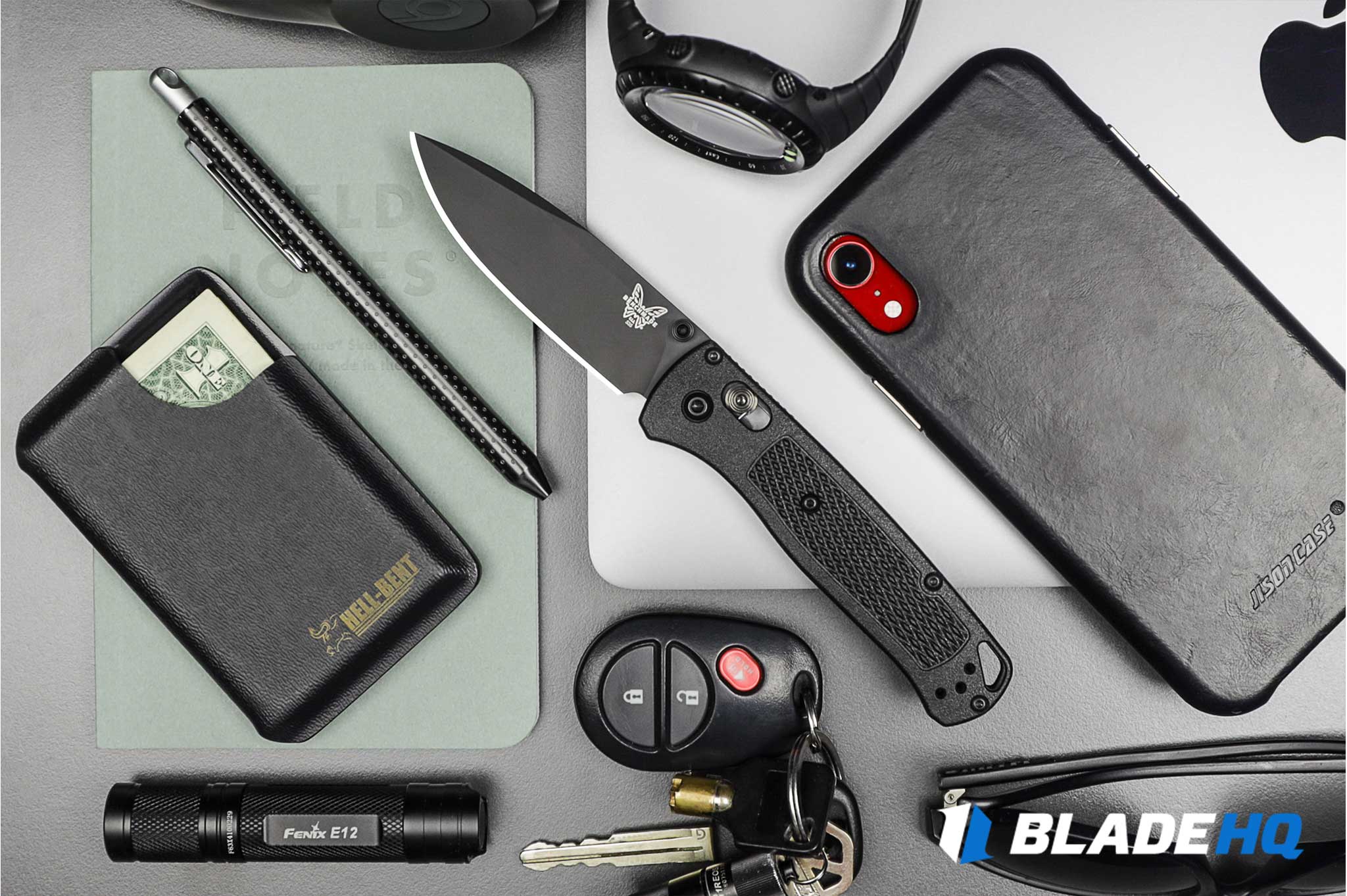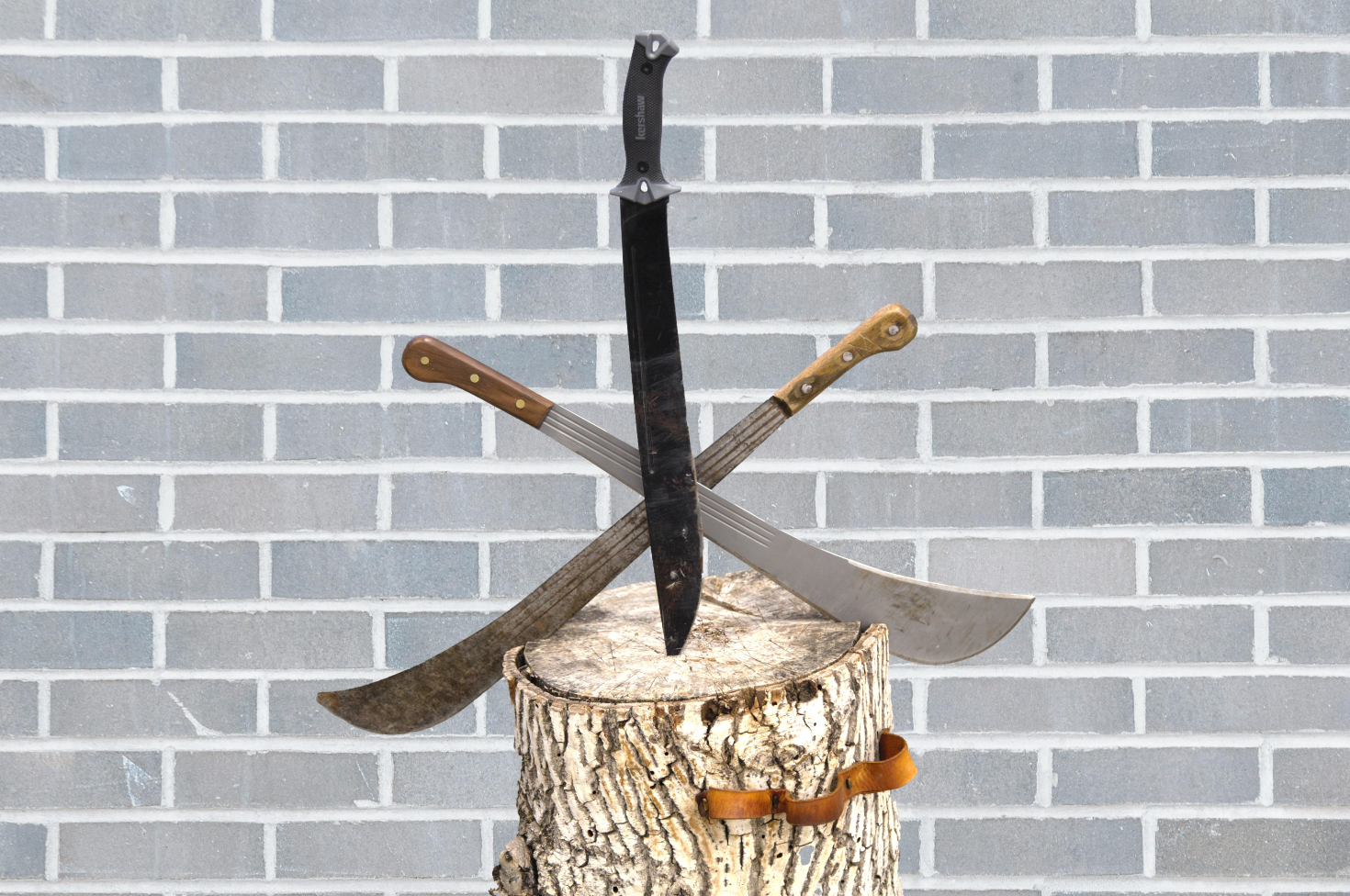
I will not lie, I’m a little sad writing this article. To me, utility knives seem like cheating (gasp). I am a lifelong student of the knife, and watching the pursuit of excellence in knife manufacturing and design is one of my favorite things. When you get a knife that you truly respect, it becomes a part of your undying soul. The humble utility blade, razor blade, replaceable blade, or whatever you call it is, well, not that. They’re literally designed to be used, abused, thrown away, and forgotten.
But today I’m checking my knife-lationship at the door and telling you everything you need to know about utility knives.
What is a utility knife?
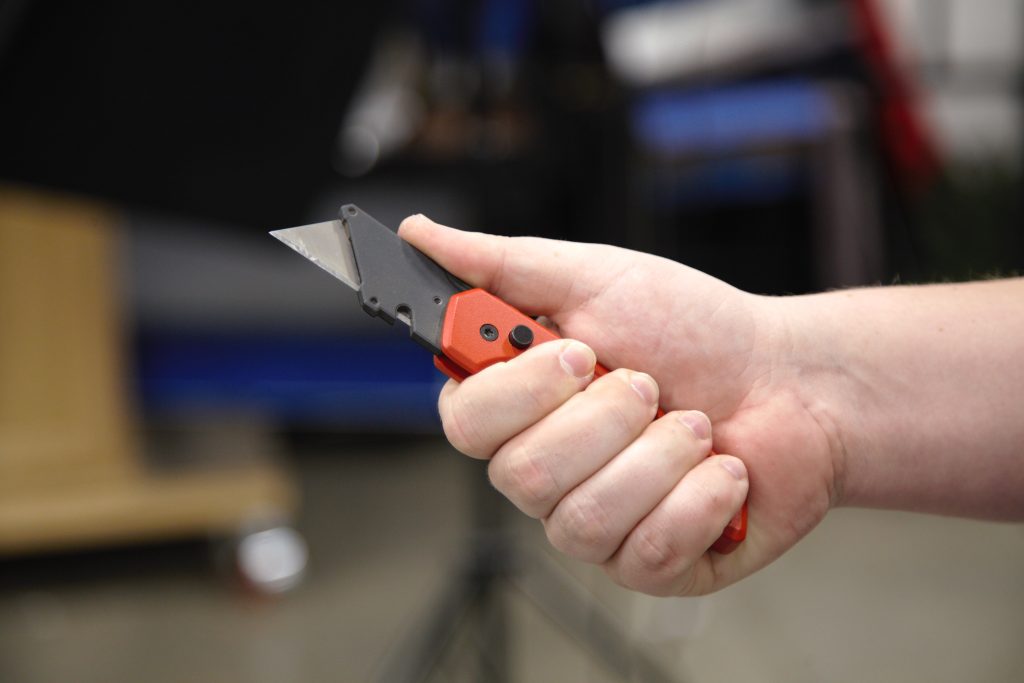
A utility knife is a knife that uses a standard, replaceable blade designed for cutting jobs that tend to be hard on edges. These knives come in all shapes and sizes, but their blades are consistent across the board – a sharp trapezoid. Similar tools will use other standard blade inserts, but they all work on the same principle: a handle with a blade holder that effectively gives the user a knife with a replaceable blade. For purposes of this article, we’ll focus mostly on the trapezoids.
Tell me about these trapezoidal utility blades.
Utility blades are very thin steel blades made to an industry standard. These blades fit in all kinds utility knives. They have a distinctive trapezoidal shape with two notches on the unsharpened spine. These notches allow blade holders to grab them securely.

This genius trapezoidal shape gives the user a precise point and a razor-sharp straight edge. When the edge is dull and the tip rounded, just pull it out, turn it around, and you have a new edge and tip on the same blade. It’s a clever and functional design for sure!
Why would someone want a utility knife?
Utility blades have four key advantages – they are low-maintenance, economical, high-performance, and optimized for legality. Let’s unpack each of these individually.
Low-Maintenance
I know a farmer who carries a Gerber EAB (Exchange-A-Blade) every single day, and I once watched him snap the tip off a utility blade while trying to carve the wood out from under a nail head.
“You know,” I said, with the tone of a knife know-it-all. “You wouldn’t break your tip so easy if you used a proper knife.”
He scoffed. “You know,” he sassed back. “In my line of work, it would be a matter of when I broke the tip off a knife, not if. Sure, I could grind a new tip back on and reset the clock, all the while my knife is getting less and less useful, or I could save myself the time babying my knife and just use this utility knife. It takes me all of four seconds to swap it out for a new one and frees me up to spend my limited time caring for animals, crops, vehicles, and other time sensitive tasks.”
He is right! When a knife needs sharpening, cleaning, repair work, or any other maintenance, it often requires special skills and tools as well as a good chunk of time. Most people who use knives for work, like my farmer friend, are so busy with other tasks that maintaining a 17° mirror-finished edge just isn’t realistic. If your job is really hard on knives and you don’t have time to baby your tools, then a utility knife might be for you!
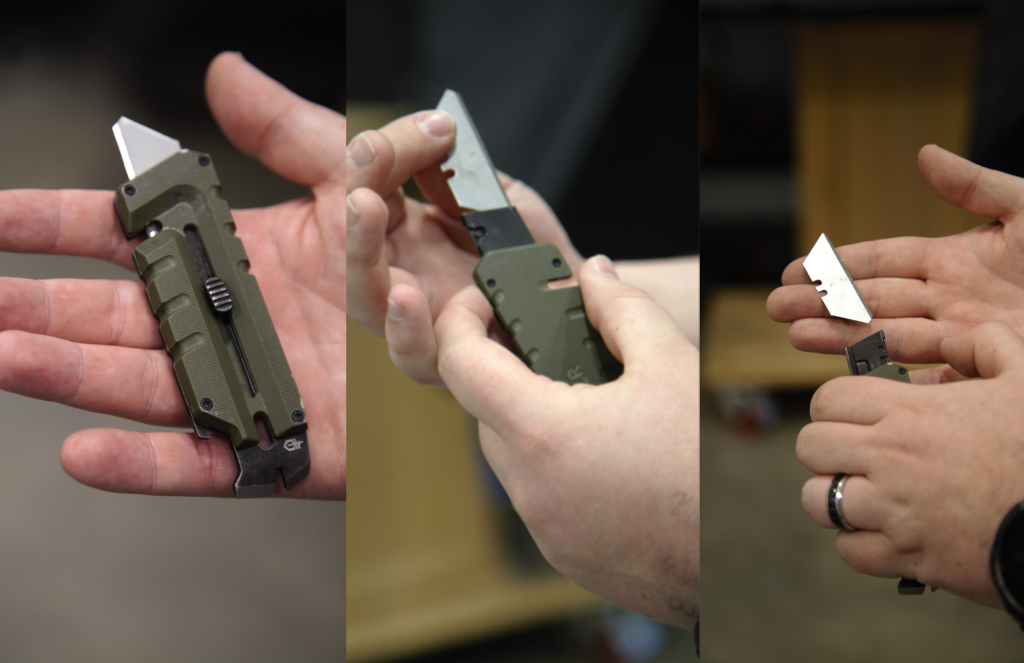
Economics
It is not uncommon for people to ask the Blade HQ team the following: “I want a knife – just one – that will serve me super well for the rest of my life. Money isn’t a super huge factor, I can save up for it. What ’cha got?”
The most common answer is one of two knives: the Benchmade Bugout and the Chris Reeve Large Sebenza. At the time of writing, the base models of these knives go for $162 and $530, respectively.
Now hear me out – you instead opted for the CIVIVI Elementum Utility, which retails for $42.50 at the time of writing. This is expensive for a utility knife, but it offers a smiliar mechanism and design to a folding knife.
Now, with regular knife use, it would probably take the average desk worker like me about two or three weeks to dull the blade to the point where I would want to replace it. How much to replace it? Pennies. I can swing by my local Home Depot and get a pack of 100 for about $17.
That means, assuming replacement every two weeks and accounting for the up-front price of the Elementum Utility, it would take about 1406 weeks, or about 27 years, before you had spent the same amount of money as a Bugout. It’s even funnier with the Sebenza, which would allow you 5734 weeks, or just shy of 110 years before you match its price.
So yes, utility blades are disposable, but hot dang are they cost effective! And if you’re really pinching pennies, no one is stopping you from sharpening and reusing utility blades!
Performance
Ultimately, the purpose of a knife is to cut, and if it can’t cut very well, it isn’t a very good knife. In theory, this means that if a knife CAN cut very well, that means it’s a great knife, right?
If you’re asking George the Knife Guy, the answer is no. Yes, the thinner a knife is, the easier it cuts. But if you go too thin, you run the risk of breaking your blade, so you must balance your thickness. About the thinnest I would ever go with a blade is 0.08”, which is very thin. I would never chop, baton, or even whittle wood with it for fear of breaking it. Sure, it would cut very well, but it would need to be babied.
If you’re asking George the Free Thinker, the answer is yes! Thinner just cuts through stuff easier, plain and simple. You didn’t say you wanted a knife that was durable or cheap, you said you wanted one that would CUT. Go thin or go home, baby! I’m talking 0.02” or thinner!
I’m going to give this one to George the Free Thinker, because the standard utility blade is only 0.017”. The thickest ones I could find were only 0.038”. Those are really thin! Even the heavy-duty-sheet-metal-cutting-super-blades are less than half of the minimum thickness I’d trust a proper knife with. Sure, you’ll break them doing all kinds of tasks, but who cares? You’re only out the price of a gumball, and you can just pop a new one back in without any trouble!
Legality
The law has very little to say about utility knives. I remember in high school, the kids studying carpentry were required to have one. In school. In 2015.
A utility knife, more so than any other knife, screams to the world “I am carried by a responsible, hard-working person.” They don’t look intimidating, and everyone has seen some blue-collar hero of society using one to make the world a better place. As much as I hate to admit it, people can’t say the same thing about knives like the Microtech Ultratech or the Spyderco Paramilitary 2.
But don’t be fooled! Utility knives can still hurt people, and we all remember where we were the day that fact became brutally evident. That’s why you can’t carry them through airport security, and if you try, you will be forced to surrender your blade.
But notice I said blade, not knife. If you accidentally carry your utility blade to the airport, you can just pop out the blade, throw it in the trash, and go ahead through security! Then, when you land, stop at a gas station, float the two bucks it costs to get a pack of 5, and you’re set while you’re on your trip. Rinse and repeat on your way home, and you’re golden. Because of legality, no such luxury applies to conventional pocket knives!
When should I pick a knife instead?
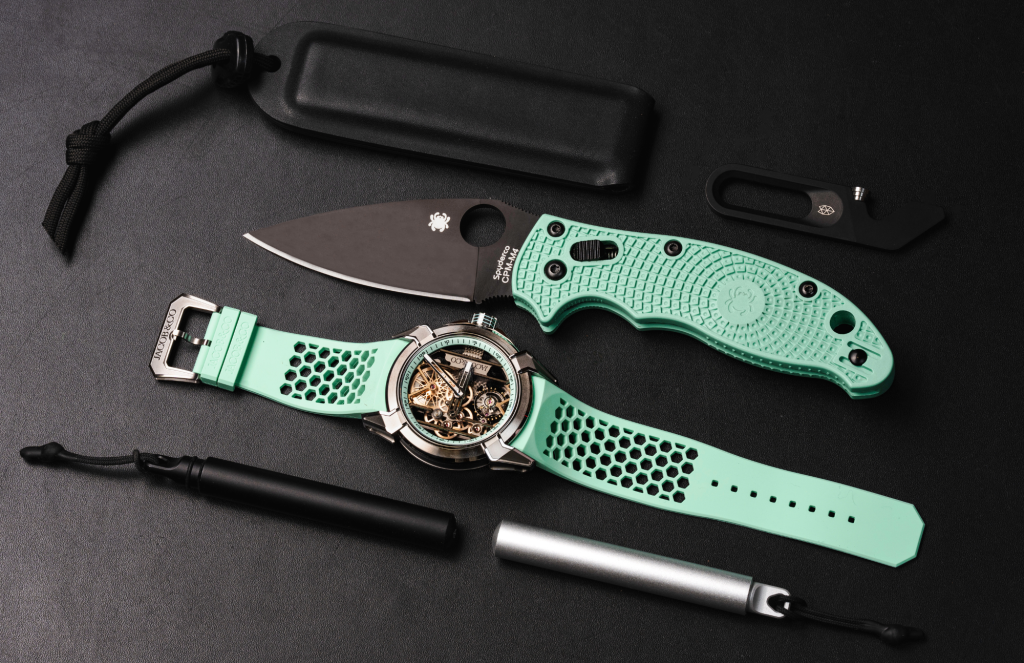
Knives afford you four key advantages that utility knives don’t, which are: diversity, durability, independence, and sentiment. Once again, let’s unpack each of these. At this point, I really need to remind myself why I like knives so much.
Diversity
Utility knives come in all shapes and sizes, but their boring, trapezoidal blades only come in a boring trapezoid. With knives, you get Wharncliffes, tantos, and Bowies oh my! It’s much more interesting to unpack the nuance in blade styles when they can differ from an industrial standard.
And these blade styles don’t just bring new looks, they bring new levels of function for slicing, piercing, and more. So, unless the only cut you ever make is a simple push cut against a board, real knives will give you the added functionality you need.
Durability
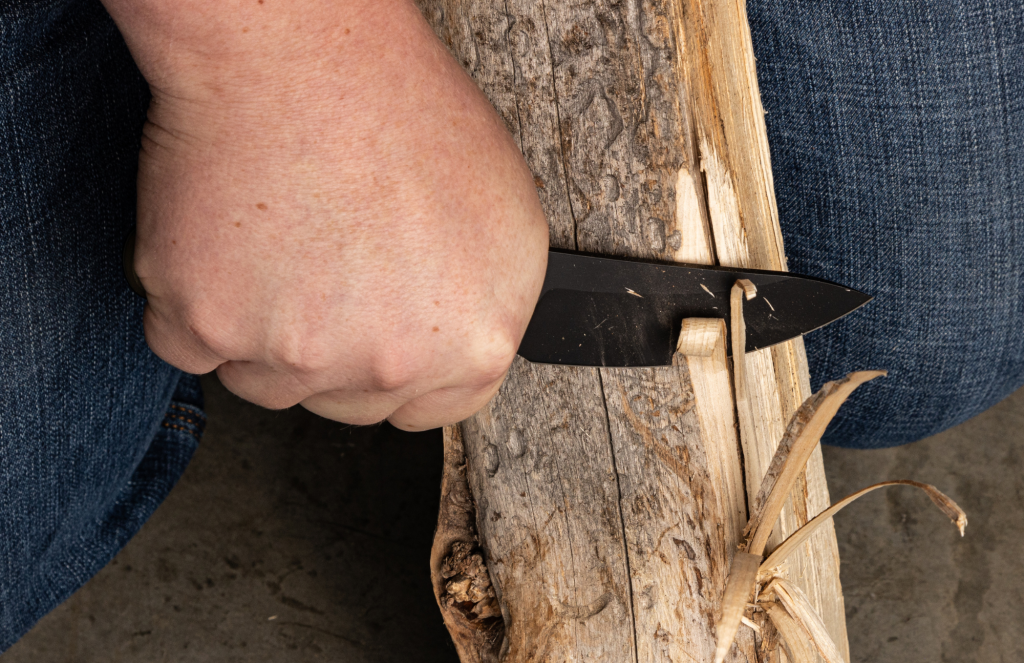
When lauding the benefits of utility blades, I really leaned into their cutting performance thanks to their thin blades, which are easy to break, but just as easy to replace. But here’s the thing – sometimes, you don’t want your knife to break (gasp). You want your knife to tough it out and push through the material without whining! Carving wood, cutting thick zip ties, opening cans, and numerous other hard cutting jobs can break those thin utility blades. Sure, you can just replace them when they break, but they leave the job undone!
So, if you’d prefer a knife that doesn’t break over one that can break without you crying about it, then a real knife is for you.
Independence
Say for a moment that I snapped my fingers, and all modern infrastructure was gone, and all you had in the entire world is what you had on you. In this hypothetical situation, would you rather have a utility knife or a proper knife with a real blade?
The answer is obvious. With no gas stations or hardware stores, those little utility blades feel a lot less functional and a lot more flimsy. So, if you like to be prepared and independent, I might suggest you get a real knife that doesn’t depend on a robust supply chain to function.
Sentiment
Nobody keeps their first toothbrush. My first toothbrush was a great tool and it seriously improved my life, but it was consumable. I threw it away without remorse and I don’t miss it. Utility blades are the same way. They’re useful, but when we’re done with them, we banish them to an eternity in a landfill.
But real knives are a different story. Many of us still have our first, and it lives in a place of honor. Knives are often gifts, rewards, symbols of belonging, and a mark of coming of age. They’re still useful tools, but they are not disposable. They are a part of us.
Can’t I just carry both?
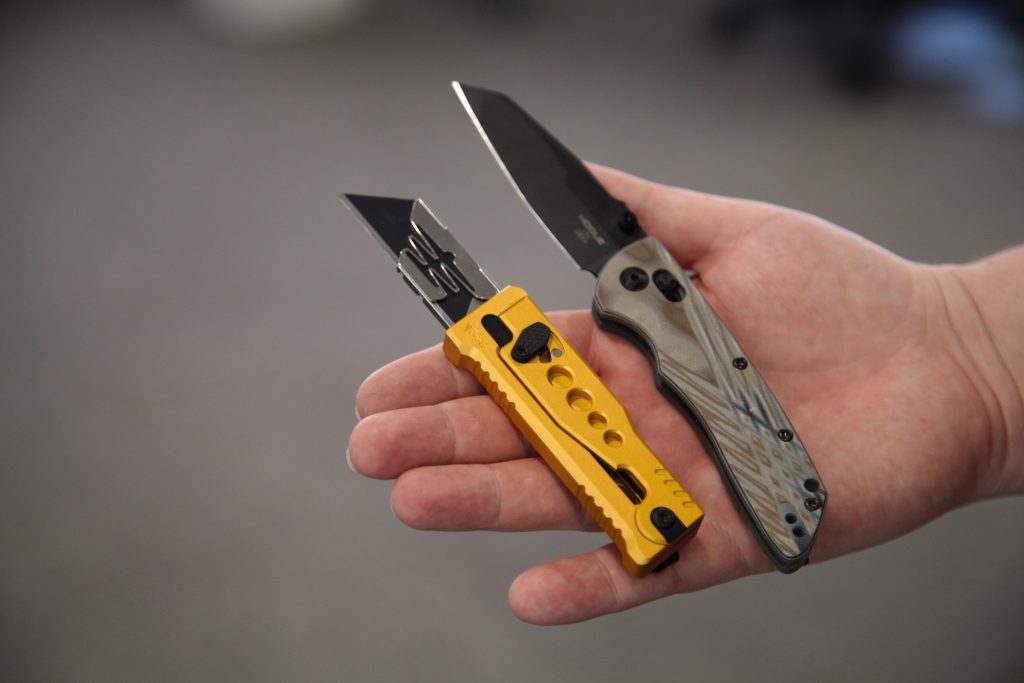
Absolutely! In fact, I carry both regularly. I always keep a real folder in my pocket, and a Gerber Prybrid in my bag. If I see a job that requires a bit more abuse than I want to give my folder, I’ll opt for the Prybrid. It hardly weighs anything but is there to protect my knife from my own idiocy, which is always in abundant supply.
What utility knife should I carry?
Here, you have four broad categories to choose from: Pocket Utility Knives, Knife-Style Utility Knives, Dedicated Utility Knives, and Specialty Utility Knives.
Pocket utility knives are small and thin blade holders are designed to give you the function of the blade without being obtrusive. These offers good functionality at a compact size, but they leave something to be desired in terms of ergonomics.
Knife-style utility knives are trying to mimic a knife in design and mechanisms. If you’re a knife collector but you’re installing carpet for the day, this is the style I’d recommend for you. Some of these use fancier materials like titanium and carbon fiber, so they’re the most expensive of the utility knives.
Dedicated utility knives aren’t trying to mimic anything. They are trying to maximize the functionality of the blades they carry. Think of that beat-up, paint-stained Stanley Classic utility knife that lives in your garage. These ones are probably the best when it comes to sheer utility, but the least safe and most difficult to carry. If your job requires the daily use of a utility knife, I’d pick up one of these. If not, I’d look to the smaller and more pocketable options.
Specialty utility knives are designed to do a specific task and use a specialty blade. Think craft knives, scalpels, and carpet blades. I’ve crossed paths with these tools, but I don’t feel qualified to tell you which ones are best. If you need a specialty utility knife, the community of that specialty can point you in the right direction.
Should I carry a utility knife?
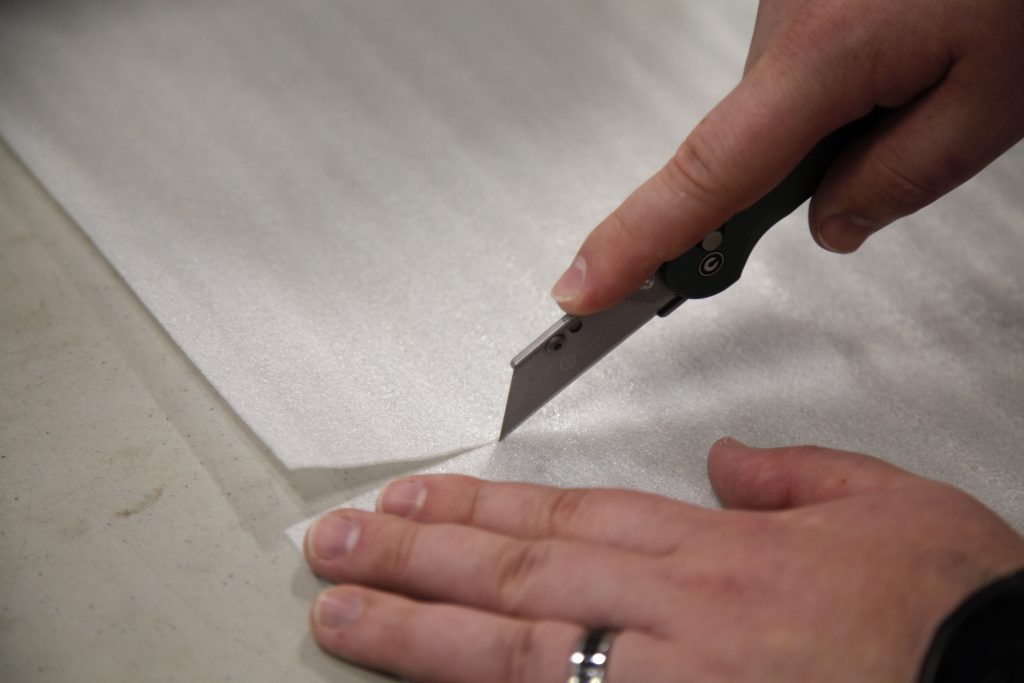
In my opinion, yes. They’re so small, light, cheap, and low maintenance that they’re never a burden. Just grab one, throw it in the bag or pocket, and go on with life. They make great loaners and great beaters.
So, whether you carry a pocket knife or not, a utility knife will seriously level up your everyday carry loadout, at almost no cost to you. Honestly, it makes so much more sense to carry a utility knife than not to.
